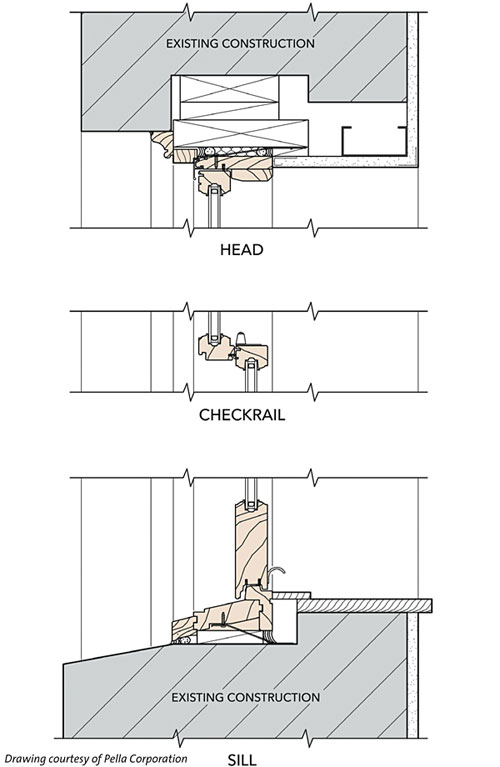Window Replacement Solutions for Commercial and Institutional Buildings
Replacement Through Complete Tear-Out and Replacement
of Existing Sash and Frames
This approach to window replacement is usually selected only when it is deemed necessary to meet historic, aesthetic or functional considerations since it can involve considerably more labor and time to achieve. Nonetheless, if the existing frame and trim impedes the achievement of other criteria, such as energy efficiency or maintenance, or if the only way to restore the historic appearance is to replace the window frame and/or trim, then it is a logical choice.
 |
"Tear out" replacement window detail drawing |
The process for implementing this approach will begin with the complete removal of the existing sash & frame exposing the exterior wall system. The rough opening will need to have any incidental items such as abandoned fasteners or flashing removed and where appropriate, new insulation installed in exposed cavities. From there, new treated blocking at the head and jambs can be installed and the sill needs to be shimmed to be made level. The new window unit is now ready to be installed and fastened in place, usually through the use of retrofit metal clips. The final steps include shimming the jambs to assure plumbness, sealing the exterior joints between the window and wall, and installing new interior and exterior trim.
Depending on the amount of work required to tear out the existing frame and sash, it is entirely possible that the adjacent wall, floor, and ceiling surfaces may be impacted. As such, additional work will be needed to restore the finishes surrounding the windows including any trim intended for re-use or damaged in the process, wallcoverings, plaster, paint, or other interior or exterior finishes.









